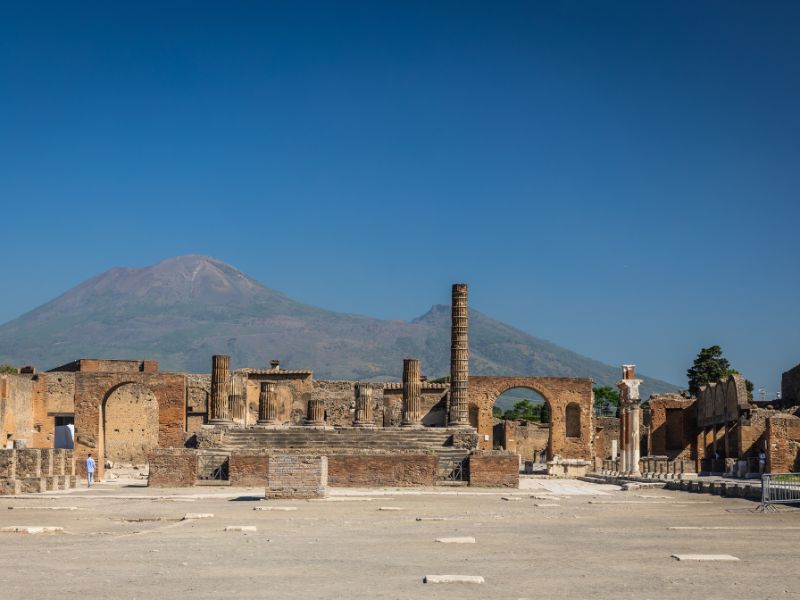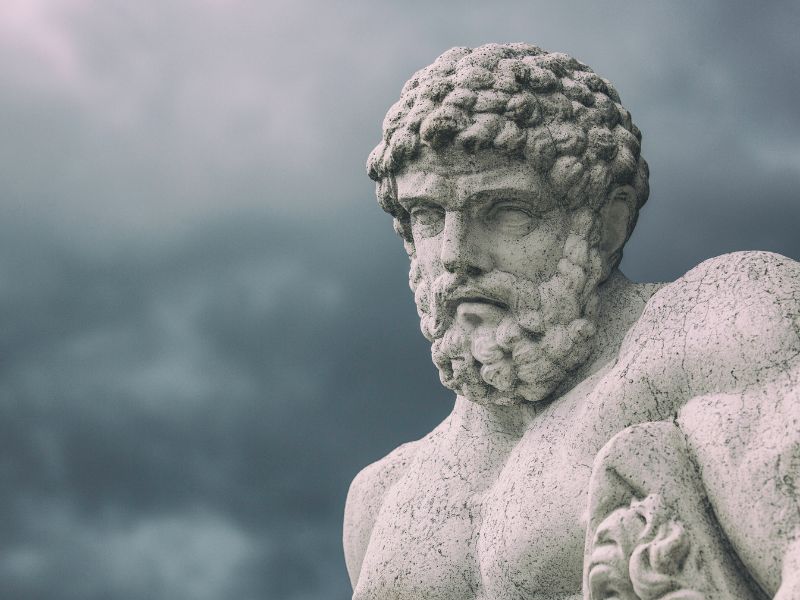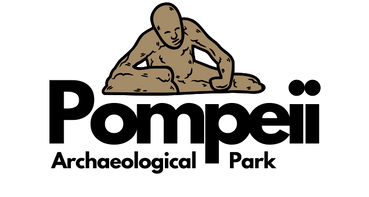Hercules in Pompeii The Hero Who Shaped Ancient Cities
Table of Contents
Introduction
Hercules, a legendary figure renowned for his extraordinary strength and heroic feats, holds a significant place in the annals of Pompeii, an ancient city preserved in time. The mythology of Hercules not only fascinated the Romans but also influenced their city planning, architecture, and artistic endeavors.
Hercules in Pompeii is evident in various artifacts and structures, symbolizing power, endurance, and the divine. As a cultural icon, Hercules left an indelible mark on Pompeian society, shaping the very essence of its civic and religious life.
The Mythological Foundation of Pompeii

Hercules’ Journey and His Role in Naming Pompeii
Central to the mythological foundation of Pompeii is the legendary journey of Hercules. According to myth, after vanquishing the monstrous Geryon in one of his renowned Twelve Labors, Hercules led Geryon’s herd of cattle from Spain to Greece.
During this epic trek, Hercules paused in what would become Pompeii, marking a significant event in the city’s lore. The name Pompeii is believed to derive from the Greek and Latin term “pompe” or “pompa,” meaning “procession,” commemorating the grand procession of cattle led by Hercules himself.
Ancient Sources on the Foundation of Pompeii
The connection of Hercules in Pompeii is documented in several ancient texts. Isidore of Seville, in his Etymologies, asserts that Hercules founded Pompeii during his grand procession through Campania.
Similarly, the esteemed Servius, in his commentary on Virgil’s Aeneid, supports this narrative, emphasizing the city’s name as a tribute to Hercules’ triumphal march. These sources highlight the significance of Hercules in Pompeii’s origins and cultural foundation.
Hercules’ Connection to Local Geography
The story of Hercules in Pompeii weaves through myth and connects to the region’s physical geography. His journey linked Pompeii to a heroic past, echoing themes of strength and divine protection. This association aligns Pompeii with the rich tapestry of Greek and Roman mythology, placing the city within the broader Mediterranean narrative.
The Mythological Foundation of Herculaneum

Hercules and the Founding of Herculaneum
Similar to Pompeii, Herculaneum boasts its own mythical ties to Hercules. According to Dionysius of Halicarnassus, Hercules founded the city after anchoring his fleet near the Bay of Naples.
Named in his honor, Herculaneum reflects the hero’s significant presence in local mythology. This foundational myth extended Hercules’ reach across the Campanian coast, reinforcing his reputation as a protector and founder.
Herculaneum’s Strategic Location
Herculaneum’s strategic location reinforced its mythological connection to Hercules in Pompeii. Positioned on a mound between two rivers and near the sea, the city was perfectly positioned for trade and defense.
The natural protection from these geographical features was seen as a blessing from Hercules, enhancing his role as both a hero and divine guardian. The hero’s legendary association with Herculaneum became intertwined with the city’s geographical identity.
The Significance of Hercules in Naming the City
By naming the city after Hercules, Herculaneum claimed divine patronage and elevated its status within the Roman world. This mythic foundation underscored the city’s identity as a place favored by the gods, where Hercules’ heroic deeds were celebrated, and his protective presence was continually invoked.
The Cult of Hercules in Pompeii and Herculaneum

Hercules’ Role as a Religious Figure
The influence of Hercules in Pompeii and Herculaneum transcended myth, manifesting in religious practice. In Pompeii, the cult of Hercules ranks among the oldest known, with archaeological evidence dating to the construction of the Doric Temple in the sixth century BC.
This temple, part of the Triangular Forum, may have been devoted to both Hercules and Athena, illustrating the hero’s pivotal role in Pompeii’s religious milieu.
Religious Practices and Devotion to Hercules
Hercules was revered through public rituals and personal offerings, forming a core part of Pompeii’s religious identity. Inscriptions and archaeological finds confirm widespread worship, with spaces dedicated to Hercules in both public and private realms. For a city seeking divine protection and prosperity, Hercules’ valor and strength made him an ideal figurehead.
Hercules’ Prominent Role in Herculaneum
In Herculaneum, Hercules was similarly venerated. A prime example is the series of elaborate wall paintings in the College of the Augustales, a religious body devoted to emperor worship. These artworks portray key scenes from Hercules’ life, such as his introduction to the gods on Mount Olympus and his battle with the river god Achelous.
Another significant depiction of Hercules in Herculaneum is found in the frieze of the so-called Basilica, featuring episodes from the hero’s life, including his discovery of the infant Telephus.
The Frieze of Hercules in Herculaneum’s Basilica
The frieze depicting Hercules’ life highlights the hero’s integration into Herculaneum’s visual and religious culture. Scenes from his legendary labors and victories adorned public spaces, affirming Hercules as a living presence in the daily lives of Herculaneum’s citizens.
The Cultural and Symbolic Legacy of Hercules

Hercules as a Protector of Cities
For both Pompeii and Herculaneum, Hercules was more than a mythological figure; he was a divine protector symbolizing strength and resilience. His legendary heroic feats and triumphs over adversity rendered him a spiritual guardian during times of war or crisis, invoking his protection and offering a sense of security and divine favor.
The Role of Myth in the Identity of Pompeii and Herculaneum
Myths surrounding Hercules contributed to the civic pride of both cities. By claiming Hercules as a founder and patron, Pompeii and Herculaneum connected themselves to ancient traditions. Integrating Hercules into public spaces, art, and religious practices demonstrated how mythology was not merely storytelling but an essential part of the cultural and religious fabric of these cities.
Conclusion
The mythological ties of Hercules in Pompeii and Herculaneum significantly shaped their cultural and religious identities. Celebrated as both founder and protector, Hercules was honored through cult worship and artistic representations.
Archaeological findings highlight his lasting influence, offering insights into how these cities viewed themselves within the Roman and Mediterranean contexts.
